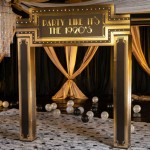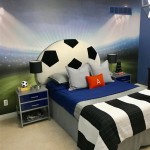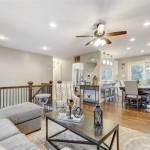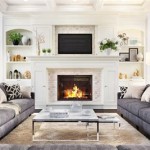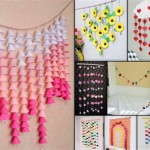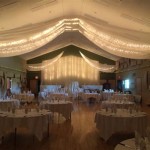Living Room Bookshelf Decorating Ideas: A Comprehensive Guide
The living room bookshelf, often occupying a place of prominence in the home, presents a valuable opportunity to showcase personal style and enhance the room's overall aesthetic. Far from simply being a repository for books, a well-decorated bookshelf can serve as a focal point, reflecting individual interests and contributing to a welcoming and visually appealing atmosphere. This article explores various decorating ideas that can transform a standard bookshelf into a personalized and stylish feature within the living room.
Combining Books with Decorative Objects
One of the fundamental principles of effective bookshelf decorating is the integration of books with a diverse range of decorative objects. Simply lining up books in a uniform manner can appear monotonous. The introduction of varying shapes, textures, and colors through decorative items adds visual interest and prevents the bookshelf from feeling overly static. Consider the following strategies:
Scale and Proportion: Varying the size of objects is crucial. Place larger items, such as sculptures or vases, strategically to anchor certain sections of the bookshelf. Smaller objects, like picture frames or trinkets, can be used to fill in gaps and create a sense of layering. Avoid overcrowding; allow each item to have its own space to breathe.
Color Palette: Establishing a cohesive color palette is essential for a harmonious look. This doesn't necessarily mean that everything needs to match exactly, but rather that the chosen colors should complement each other. Consider drawing inspiration from the existing color scheme of the living room. Neutral tones, such as whites, creams, and browns, provide a versatile base, while pops of color can be introduced through artwork, vases, or book covers. Maintaining a balance between neutral and vibrant elements prevents the bookshelf from becoming overwhelming.
Texture and Material: Incorporating different textures adds depth and richness to the display. Contrast smooth surfaces with rough ones, and combine various materials such as wood, metal, glass, and ceramics. For example, a wooden bowl can be placed next to a metal sculpture, or a glass vase can be positioned near a stack of books with textured covers. This interplay of textures creates a more engaging and visually stimulating arrangement.
Personal Touches: The most successful bookshelves are those that reflect the personality and interests of the homeowner. Incorporate items that hold personal significance, such as family photos, travel souvenirs, or handcrafted objects. These items not only add character but also serve as conversation starters. Consider displaying collections, such as vintage cameras, miniature figurines, or unique rocks and minerals.
Negative Space: Don't underestimate the power of negative space. Leaving some areas of the bookshelf intentionally empty can create a sense of balance and prevent it from feeling cluttered. Negative space allows the eye to rest and appreciate individual items without being overwhelmed by too much visual information. This is particularly important when dealing with a bookshelf that contains a large number of books and decorative objects.
Arranging Books: Beyond the Straight Line
The way books are arranged on the shelf significantly impacts the overall aesthetic. Moving beyond the traditional straight line arrangement opens up a range of creative possibilities.
Horizontal vs. Vertical Stacks: Alternating between horizontal and vertical stacks of books breaks up the monotony and creates visual interest. Vertical stacks draw the eye upwards, while horizontal stacks create a sense of stability. Consider mixing the two arrangements within the same shelf, placing larger, heavier books in horizontal stacks at the bottom and lighter, decorative books in vertical stacks at the top.
Color-Coding: Arranging books by color can create a striking visual effect. This method works best when the bookshelf contains a substantial number of books with diverse cover colors. Grouping books within the same color family, progressing from lighter to darker shades, creates a sense of order and visual harmony. While some may find this approach impractical for finding specific titles, it is undeniably visually appealing.
Spine In/Out: Turning the spines of the books inward, so that only the pages are visible, creates a more minimalist and uniform look. This approach emphasizes the shape and texture of the books rather than their titles. While this can be a controversial choice among book lovers, it can be effective in creating a clean and modern aesthetic, particularly when combined with other minimalist decorating elements.
Bookends and Supports: Bookends and other supports are both functional and decorative. They prevent books from toppling over and provide an opportunity to introduce additional visual interest. Choose bookends that complement the overall style and color palette of the bookshelf. Options range from classic marble or metal bookends to more whimsical and contemporary designs. Consider using other objects, such as small sculptures or decorative boxes, as bookends.
Layering with Books: Using books as platforms to elevate smaller objects is a clever way to create depth and dimension. Place a small framed picture or a decorative object on top of a stack of books to draw attention to it and create a sense of layering. This technique works particularly well for adding height to smaller items.
Lighting and Background Considerations
The lighting and background of the bookshelf play a crucial role in highlighting the display and creating the desired atmosphere. These often-overlooked elements can significantly enhance the overall visual impact.
Built-In Lighting: If the bookshelf has built-in lighting, take advantage of it. Integrated lighting illuminates the contents of the bookshelf and creates a warm and inviting glow. Ensure that the lighting is evenly distributed and that it highlights the key elements of the display. Dimmable lights offer flexibility in adjusting the brightness to create different moods.
Accent Lighting: If the bookshelf does not have built-in lighting, consider adding accent lights. Small spotlights or LED strip lights can be strategically placed to illuminate specific areas or objects. Clip-on lights are a versatile option that can be easily repositioned. Table lamps placed near the bookshelf can also contribute to the overall lighting scheme.
Backing Material: The backing material of the bookshelf can significantly impact its overall appearance. A neutral-colored backing, such as white or cream, provides a clean and versatile backdrop that allows the contents of the bookshelf to stand out. A patterned wallpaper or a textured fabric can add visual interest and create a more dramatic effect. Consider painting the backing a contrasting color to make the display pop.
Wall Color: The color of the wall behind the bookshelf should complement the colors of the books and decorative objects. A light-colored wall can create a sense of spaciousness, while a dark-colored wall can add depth and drama. Consider using the same color as the trim in the room to create a cohesive look. If the bookshelf is built-in, the wall color will already be determined, but if it is a freestanding unit, the wall color should be taken into consideration when choosing the color of the bookshelf.
Mirrors: Incorporating mirrors into the bookshelf display can create the illusion of more space and reflect light, making the room feel brighter. Small mirrors can be placed behind decorative objects or used as bookends. A larger mirror placed on the wall behind the bookshelf can serve as a focal point and reflect the contents of the room.
Plants: Adding plants to the bookshelf brings a touch of nature indoors and adds a sense of life and vitality. Potted plants, such as succulents or small ferns, can be placed on the shelves to add greenery and texture. Trailing plants, such as ivy or pothos, can cascade down the sides of the bookshelf, creating a visually appealing effect. Ensure that the plants are appropriate for the lighting conditions in the room and that they are watered regularly.
By carefully considering these various decorating ideas, a living room bookshelf can be transformed from a functional storage unit into a stylish and personalized centerpiece that enhances the overall aesthetic of the room. The key is to experiment with different arrangements, color palettes, and textures until the desired look is achieved. The process should be enjoyable and reflective of the homeowner's individual style and personality.

9 Foolproof Bookshelf Decorating Ideas

12 Tips And Secrets For How To Decorate Shelves A Free Checklist Worthing Court Diy Home Decor Made Easy

How To Decorate Bookshelves Green With Decor

20 Chic Bookshelf Decorating Ideas How To Decorate Bookshelves

45 Must Know Tips For Styling Your Built In Bookshelves Shelf Decor Living Room Bookcase

Styled Family Room Bookshelves Shelf Decor Living Shelves Decorating

Bookshelf Paint Ideas And Inspiration Architectural Digest

30 Mantel And Bookshelf Styling Tips

20 Ideas For Bookshelf Decorating 2025 Decor Inspo

18 Gorgeous Rooms With Built In Bookcases
Related Posts
